Role Mexican Politician Name Benito Juarez | Political party Liberal Height 1.37 m | |
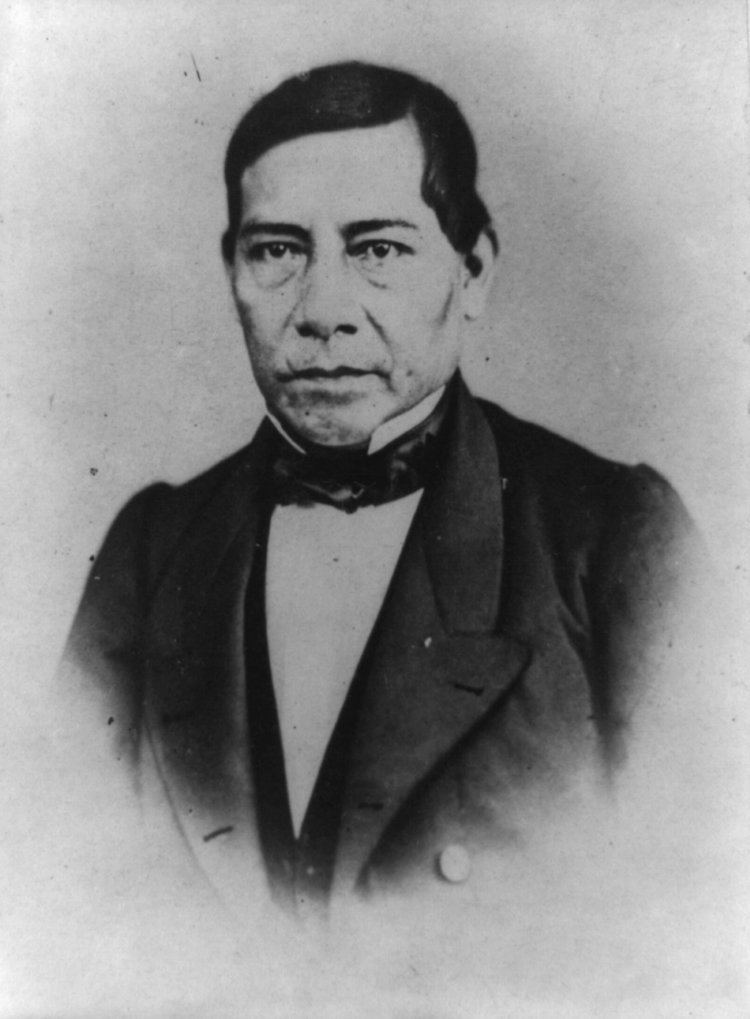 | ||
Preceded by Maximilian I of Mexico (as Emperor) Succeeded by Sebastian Lerdo de Tejada Full Name Benito Pablo Juarez Garcia Children Benito Juarez Maza, Soledad Juarez Maza Parents Brigida Garcia, Marcelino Juarez Similar People Porfirio Diaz, Maximilian I of Mexico, Venustiano Carranza, Miguel Hidalgo y Costilla, Benito Mussolini | ||
Domestic partner Juana Rosa Chagoya | ||
Minibiograf a benito ju rez
Benito Pablo Juárez García ([beˈnito ˈpaβlo ˈxwaɾes garˈsi.a]) (21 March 1806 – 18 July 1872) was a Mexican lawyer and liberal politician of Zapotec origin from Oaxaca, who was a leader of the liberals during La Reforma and served as the president of Mexico. Juárez was a freemason and was neither an atheist or a deist; but he sought secularization of social and political institutions, and particularly to remove Roman Catholic control of education. Under his leadership, Mexican liberals resisted the French intervention in Mexico, overthrew Emperor Maximilian's Second Mexican Empire, restored the Republic, and used liberal measures to modernize the country. He is "a preeminent symbol of Mexican nationalism and resistance to foreign intervention." He died in office in 1872 and was succeeded in the presidency by Sebastian Lerdo de Tejada.
Contents
- Minibiograf a benito ju rez
- Benito ju rez mas n
- Early life
- Political career
- Supreme Court
- President
- Expelling the French
- Legacy
- Mexico
- Currency in Mexico
- Argentina
- Quotations
- References
Sala, Comedor, Estudio y Alcoba de Don Benito Juárez.
Benito ju rez mas n
Early life
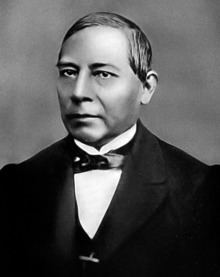
Juárez was born on 21 March 1806, in a small adobe house in the village of San Pablo Guelatao, Oaxaca, located in the mountain range now known as the "Sierra Juárez". His parents, Brígida García and Marcelino Juárez, were Zapotec peasants and died of complications of diabetes when he was three years old. Shortly afterward, his grandparents died as well, so after that his uncle raised him. He described his parents as "indios de la raza primitiva del país," that is, "Indians of the original race of the country." He worked in the cornfields and as a shepherd until the age of 12, when he walked to the city of Oaxaca to attend school. At the time, he could speak only Zapotec.
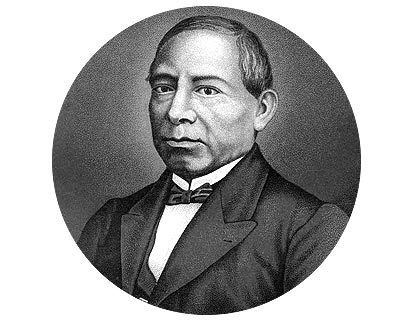
In the city, where his sister worked as a cook, he took a job as a domestic servant for Antonio Maza. A lay Franciscan and bookbinder, Antonio Salanueva, was impressed with young Benito's intelligence and desire for learning, and arranged for his placement at the city's seminary so that he could train to become a priest. His earlier education was rudimentary, but be began studying Latin, completing the secondary curriculum too young to be ordained. Juárez had no calling to become a priest and began studying law at the Institute of Sciences and Arts in the state capital, graduating in 1834. Even prior to his graduation, he sought political office, and was elected to the Oaxaca city council in 1831. In 1841 he was appointed a civil judge. In 1843 when he was in his late 30s, Benito married Margarita Maza, the daughter of his sister's patron.The family was of European origin and part of Oaxaca's respectable society.With the marriage Juárez gained social standing. Margarita Maza accepted his proposal and said of Juárez, "He is very homely, but very good."
Political career
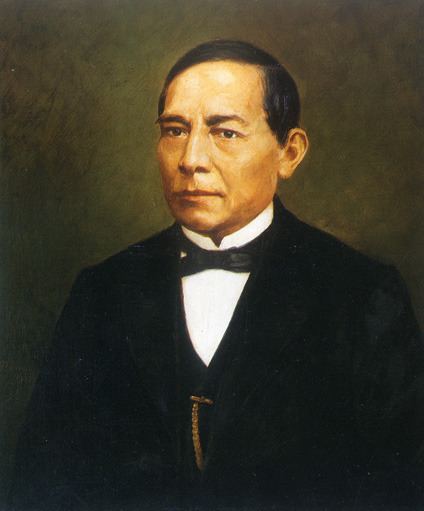
Following Juárez's graudation as a lawyer in 1834 and a civil judge in 1841, he became part of the Oaxaca state government, led by liberal Antoino León, and became a prosecutor in the Oaxaca state court and was then elected to the state legislature in 1845. Juárez was subsequently elected to the federal legislature, where he supported Valentín Gómez Farías. With the return to the presidency of Antonio López de Santa Anna in 1847, Juárez returned to Oaxaca. He was elected governor of the state of Oaxaca from 1847 to 1852. During his tenure as governor, he supported the war effort against the U.S. in the Mexican-American War, but seeing the war was lost, he refused Antonio López de Santa Anna's request to regroup and raise new forces. This, as well as his objections to the corrupt military dictatorship of Santa Anna, led to his exile in 1853. He spent his exile in New Orleans, Louisiana, working in a cigar factory. In 1854, he helped draft the liberals' Plan of Ayutla, a document calling for Santa Anna's being deposed from power and the calling of a convention to implement a new constitution.
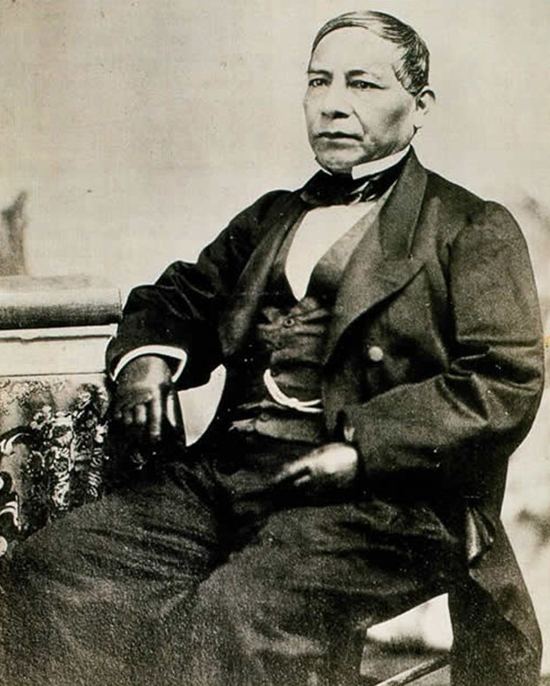
Faced with growing opposition, Santa Anna was forced to resign in 1855. meantime Juárez had returned to Mexico. The winning side, the liberales (Liberals), formed a provisional government under General Juan Álvarez, inaugurating the period known as La Reforma. Juárez served as Minister of Justice and ecclesiastical affairs, and it was during this time that Juárez drafted the law named after him, the Juárez Law, which declared all citizens equal before the law and restricted the privileges (fueros) of the Catholic Church and the Mexican army. President Alvarez signed the draft into law in 1855. The Reform laws sponsored by the puro (pure) wing of the Liberal Party curtailed the power of the Catholic Church, confiscating Church land, and restricting the military, while trying to create a modern civil society and capitalist economy based on the model of the United States. The Ley Juárez was subsequently incorporated into the Mexican Constitution of 1857, but Juárez had no role in that document's drafting, since he had returned to Oaxaca where he served again as governor.
Supreme Court
The new liberal constitution of 1857 was promulgated and President Ignacio Comonfort appointed Minister of Government in November 1857. He was then elected President of the Supreme Court of Justice, an office that put its holder as the successor to the President of the Republic. Conservatives led by General Félix María Zuloaga, with the backing of the military and the clergy and under the slogan religión y fueros, launched a revolt under the Plan of Tacubaya on 17 December 1857. Comonfort sought to placate the rebels by appointing several conservatives to the Cabinet, dissolving the Congress, and implementing most of the Tacubaya Plan. Juárez, Ignacio Olvera, and many other deputies and ministers were arrested. The actions did not go far enough for the rebels, and on 11 January 1858, Zuloaga demanded Comonfort's resignation. Comonfort then re-established the Congress, liberated all prisoners and then resigned as President. The conservative forces proclaimed Zuloaga as President on 21 January.
Meanwhile, under the terms of the 1857 Constitution, the President of the Supreme Court of Justice became interim President of Mexico until a new election could be held. Juárez was thus acknowledged as president by liberals on 15 January 1858 and assumed leadership of the Liberal side of the civil war known as the War of the Reform (Guerra de Reforma), (1858–60).
As Zuloaga's men were in control of Mexico City, Juárez and his government fled, first to Querétaro and later to Veracruz, whose customs revenues were used to fund the government's expenditure.
In Veracruz
On May 4, 1858, Juarez arrived in Veracruz where the government of Manuel Gutiérrez Zamora was stationed with General Ignacio de la Llave. His wife and Children were waiting for his arrival on the dock of the Veracruz’s port, along with a large part of the population that had flooded the the pier to greet him. There, Juarez lived many months without any unexpected occurrences until Miguel Miramon’s attack who finally found and moved toward the port on March 30, 1859. On April 6th, Juarez received a diplomatic representative of the United States Government: Robert McLane.
A treaty between the Conservative and Liberal governments, the McLane-Ocampo Treaty was signed in December 1859, although Buchanan was unable to secure ratification of the treaty by the US Congress. Nevertheless, the aid received enabled the liberals to overcome the conservatives' initial military advantage; Juárez's government successfully defended Veracruz from assault twice during 1860 and recaptured Mexico City on 1 January 1861.
Nationalization of the Wealth of the Clergy
On July 12 of 1859, Juárez decreed the first regulations of the reform: “The Law of Nationalization of the Ecclesiastical Wealth.” This prohibited the Catholic Church from having properties in Mexico. Because of Juarez's Law of Nationalization, the Catholic Church and the regular army supported The Conservatives but the Liberals had the support of several state governments in the north and central-west and the administration of US President James Buchanan.
Due to the initial weakness of the Juarez administration, conservatives Felix Maria Zuloaga, and Leonardo Marquez had the opportunity to reclaim power. To resolve this, Juarez petitioned Congress to be given Emergency Powers. The liberal members of Congress denied the petition with the main argument being that the country was under a current constitutional government that had been archived only through a very bloody civil war. It was not possible for Juarez, who had implemented said constitution, now wished to violate the legal functions of the constitution by giving himself dictatorial powers. However, two groups of conservatives trapped Ocampo and Santos Degollado respectively and killed them, thereby bringing the attention of the liberals in Congress. This action by the conservatives changed their opinion, and they gave Juarez the money and power that he needed to finish the conservatives off.
Juarez had excellent finances during his administration. His Government achieved budget deficit of 400,000 pesos every month. However he was only able to collect one million pesos by selling the church lands.
President
In March 1861, Juárez was finally elected President in his own right under the Constitution of 1857. However, the Liberals' celebrations of 1861 were short-lived. The war had severely damaged Mexico's infrastructure and crippled its economy. While the Conservatives had been defeated, they would not disappear, and the Juárez government had to respond to pressures from these factions. He was forced to give an amnesty to captured Conservative guerrillas still resisting the Juárez government even though they were executing captured Liberals, which included Melchor Ocampo. In view of the government's desperate financial straits, Juárez canceled repayments of interest on foreign loans.
Spain, Britain and France, angry over unpaid Mexican debts, sent a joint expeditionary force that seized the Veracruz Customs House in December 1861. Spain and Britain soon withdrew after they realized that the French Emperor Napoleon III intended to overthrow the Juárez government and establish a Second Mexican Empire, with the support of the remnants of the Conservative side in the Reform War. Thus began the French intervention in Mexico in 1862.
Mexican forces under Ignacio Zaragoza won an initial victory over the French at the Battle of Puebla in 1862, celebrated annually as Cinco de Mayo (5 May). The French advanced again in 1863, forcing Juárez and his elected government to flee Mexico City once again, first to San Luis Potosí, then to the arid northern city of El Paso del Norte, present day Ciudad Juárez, Chihuahua, and finally to the capital of the state, Chihuahua City, where he set up his cabinet and government-in-exile. There, he would remain for the next two and a half years. Meanwhile, Maximilian von Habsburg, a younger brother of the Emperor of Austria, was proclaimed Emperor Maximilian I of Mexico on 20 April 1864 with the backing of Napoleon III and a group of Mexican conservatives.
Before Juárez fled, Congress granted him an emergency extension of his presidency, which would go into effect in 1865, when his term expired, and last until 1867, when the last of Maximilian's forces were defeated.
Expelling the French
In response to the French invasion and the elevation of Maximilian, Juárez sent General Plácido Vega y Daza to California to gather Mexican American sympathy for Mexico's plight. Maximilian offered Juárez amnesty and later even the post of prime minister, but Juárez refused to accept a government "imposed by foreigners" or a monarchy. The government of the United States was sympathetic to Juárez, refusing to recognize Maximilian and opposing the French invasion as a violation of the Monroe Doctrine, but it was distracted by the American Civil War. Following the end of the war, US President Andrew Johnson demanded the French evacuate Mexico and imposed a naval blockade in February 1866.
When Johnson could get no support in Congress, he allegedly had the Army "lose" some supplies (including rifles) "near" (across) the border with Mexico, according to U.S. General Philip Sheridan's journal account.
Faced with US opposition to a French presence and a growing threat on the European mainland from Prussia, French troops began pulling out of Mexico in late 1866. Maximilian's liberal views cost him support from Mexican conservatives as well. In 1867, the last of the Emperor's forces were defeated and Maximilian was sentenced to death by a military court (a retaliation for Maximilian's earlier orders for the execution of republican soldiers, actually the original "Black Decree" was from Juarez - who had people executed, without trial, for "helping" his enemies whereas Maximilian often pardoned people who had actually fought against him). Despite national and international pleas for amnesty, Juárez refused to commute the sentence, and Maximilian was executed by firing squad on 19 June 1867 at Cerro de las Campanas in Querétaro. His last words had been "¡Viva México!" His body was returned to Austria for burial.
Juárez had no intention to leave power following the end of the French invasion. He won in a relatively clean manner the 1867 election and immediately requested and obtained special powers from Congress to rule by decree. Despite being forbidden to do so by the 1857 constitution, Juárez once again ran for re-election in 1871.
Amid fraud charges and widespread controversy, he was re-elected for a new term in 1871. During his last two terms, he used the office of the presidency to ensure electoral success, obtain personal gains and suppress revolts by opponents, such as Porfirio Díaz. Juárez died of a heart attack on July 18, 1872 while reading a newspaper at his desk in the National Palace in Mexico City. He was succeeded by Sebastián Lerdo de Tejada, his foreign minister.
Legacy
Today Benito Juárez is remembered as being a progressive reformer dedicated to democracy, equal rights for his nation's indigenous peoples, his antipathy toward organized religion, especially the Catholic Church (motivated by his adherence to Freemasonry), and what he regarded as defense of national sovereignty. The period of his leadership is known in Mexican history as La Reforma del Norte (The Reform of the North), and constituted a liberal political and social revolution with major institutional consequences: the expropriation of church lands, the subordination of the army to civilian control, liquidation of peasant communal land holdings, the separation of church and state in public affairs, and also the almost-complete disenfranchisement of bishops, priests, nuns and lay brothers, codified in the "Juárez Law" or "Ley Juárez".
La Reforma represented the triumph of Mexico's liberal, federalist, anti-clerical, and pro-capitalist forces over the conservative, centralist, corporatist, and theocratic elements that sought to reconstitute a locally-run version of the old colonial system. It replaced a semi-feudal social system with a more market-driven one, but following Juárez's death, the lack of adequate democratic and institutional stability soon led to a return to centralized autocracy and economic exploitation under the regime of Porfirio Díaz. The Porfiriato (Porfirist era), in turn, collapsed at the beginning of the Mexican Revolution.
21 March is the set day to commemorate Juárez. This date has become a national holiday in Mexico, which has continued to grow in acceptance within Mexican culture.
On 7 February 1866, Juárez was elected as a companion of the 3rd class of the Pennsylvania Commandery of the Military Order of the Loyal Legion of the United States (MOLLUS). While membership in MOLLUS was normally limited to Union officers who had served during the American Civil War and their descendants, members of the 3rd Class were civilians who had made a significant contribution to the Union war effort. Juárez is one of the very few non-United States citizens to be a MOLLUS companion.
In Washington, D.C., there is a monument by Enrique Alciati, a gift to the US from Mexico. Juárez has been mentioned or featured in television and film. Juarez is a 1939 American historical drama film directed by William Dieterle, and starring Paul Muni as Juárez. In January 1959, the episode entitled "The Desperadoes" of the ABC/Warner Brothers western television series, Sugarfoot, starring Will Hutchins in the title role, focuses upon an imaginary plot to assassinate Juárez. Set at a mission in South Texas, the episode features Anthony George as a Catholic priest, Father John, a friend of the series character Tom "Sugarfoot" Brewster.
Mexico
Juarez Complex National Palace
In the National Palace in Mexico, exists in what was his home during his regime, a museum in his honor. It takes the furniture and objects used; room, dining room, study and bedroom presidential shown in photographs.
Sala, Comedor, Estudio y Alcoba de Don Benito Juárez.
Currency in Mexico
From the time of Juárez, Mexico's government has issued several bills with the face and the subject of Juárez. In 2000, $20.00 (twenty pesos) bills, where on one side appears the bust of Juárez and to his left, the Juarista eagle across the Chamber, were published.
Argentina
In Argentina, more precisely in the Province of Buenos Aires, there are the partido and city head Benito Juárez. It was founded in 1867 by Mariano Roldán and has nearly twenty thousand habitants. Two public high schools in the city carry Mexican flag symbols in their ceremonies and one of them has them imposed in the name of the institution.
Quotations
Juárez's famous quotation continues to be well-remembered in Mexico: "Entre los individuos, como entre las naciones, el respeto al derecho ajeno es la paz", meaning "Among individuals, as among nations, respect for the rights of others is peace". The portion of this motto in bold is inscribed on the coat of arms of Oaxaca.
"The law has always been my shield and my sword" is a phrase often reproduced as decoration inside court and tribunals buildings.
